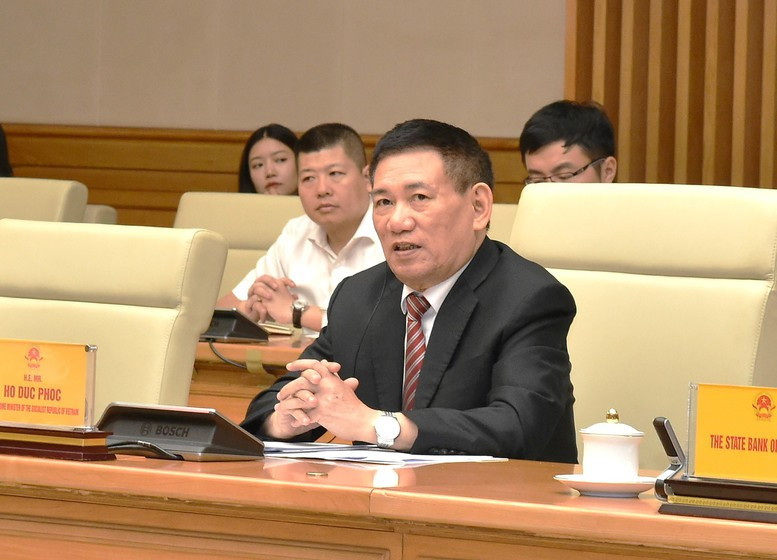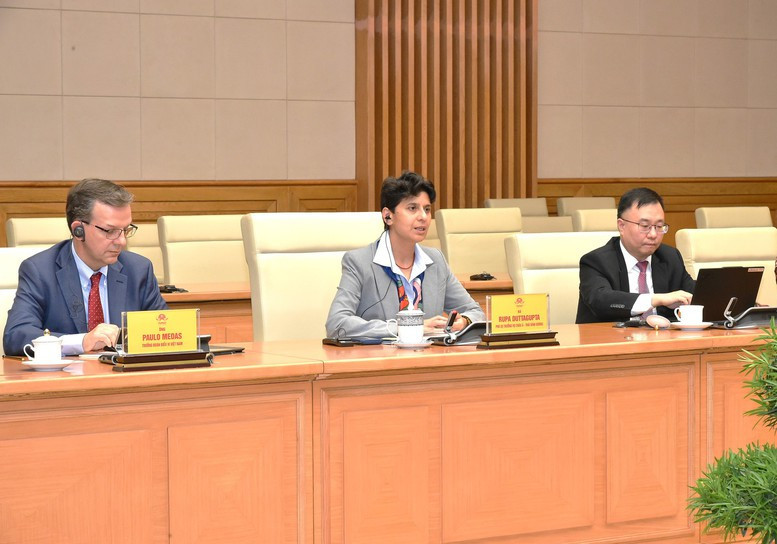Carrying out Vietnam’s ambitious reform agenda - streamlining the state apparatus, nurturing the private sector, and upgrading infrastructure - will create lasting opportunities for medium‑term economic growth.
IMF endorses Vietnam’s reform direction
Last weekend, a delegation from the International Monetary Fund (IMF) led by Paulo Medas held discussions in Hanoi with Deputy Prime Minister Ho Duc Phoc, the State Bank, Ministry of Finance, National Assembly, private sector leaders, and policy researchers.

IMF delegates observed that Vietnam’s economy rebounded sharply in 2024, growing at 7.1% thanks to strong exports, resilient foreign direct investment (FDI), and supportive policies. Growth continued at 6.9% in Q1 2025, with inflation under control and a record current account surplus of 6.6% of GDP in 2024.
Despite this momentum, risks remain - especially from trade uncertainties, including potential U.S. retaliation tariffs.
If reciprocal tariffs take effect in Q3, growth may slow to 5.4% in 2025 and slow further in 2026. But if global trade tensions ease, Vietnam’s prospects improve significantly.
Financial institutions echo this caution: Fitch forecasts GDP growth of 5.6% in 2025 and 5.3% in 2026 under tariffs, while Bloomberg warns of a possible long-term loss of 8.9% of GDP by 2030.
In April, IMF projected 5.2% growth in 2025; World Bank 5.8%; ADB 6.6%.
Vietnam targets 8% GDP growth in 2025 to launch into double-digit growth in 2026. According to Dr. Nguyen Quoc Viet from VEPR, IMF and others have adjusted projections to around 6.3% amid ongoing global caution. However, optimistic scenarios could see real growth exceeding forecasts by 1–2 percentage points.
IMF warned that global financial tightening and elevated corporate leverage may constrain exports and investment. On the upside, successful trade deals, structural reforms, and infrastructure upgrades could significantly boost medium-term growth.
Fiscal policy to cushion downside shocks
IMF recommends maintaining macroeconomic stability while using fiscal policy - supported by low public debt - to cushion negative shocks. Accelerating public investment and strengthening social safety nets will be important.
Monetary policy, with limited room to maneuver, should focus on anchoring inflation expectations. Allowing flexible exchange rates and careful easing are advisable if global rate cycles shift lower.
IMF also urges financial sector resilience - reinforcing banking supervision, liquidity buffers, and frameworks for dealing with weak banks.
Dr. Viet highlights macroeconomic risks from rapid money (M2) and credit growth - 13–15% a year versus 10–11% GDP growth - and credit-to-GDP levels near 130%, the highest in ASEAN.
Private investment and public investment rebound

In 2024, total social investment rose 7.5% to VND 3,692 tn (~$157 bn), led by private sector investment (56%). Q1 2025 saw an 8.3% increase, higher than 5.2% in Q1 2024, with state sector leading.
Vietnam remains committed to the 8% growth target for 2025, underpinning ambitions for double-digit growth from 2026. IMF’s Medas affirms that implementing reforms - public sector streamlining, private sector development, infrastructure upgrades - can unlock strong medium-term growth. Continued structural reform will be key to boosting productivity, governance, and the business environment.
Though the ambition is widely applauded, execution will be vital. Reform must be accompanied by infrastructure improvements - logistics, energy - capital market stability, education, and productivity enhancement. Effective public investment management and prudent fiscal policy are essential. Strengthening anti‑money laundering frameworks and conducting multi-dimensional impact assessments will further bolster reform.
To succeed, macro policies must balance supply and demand, support vulnerable groups, and maintain stability while improving workforce skills, embracing innovation, and ensuring sustainable growth.
Lan Anh